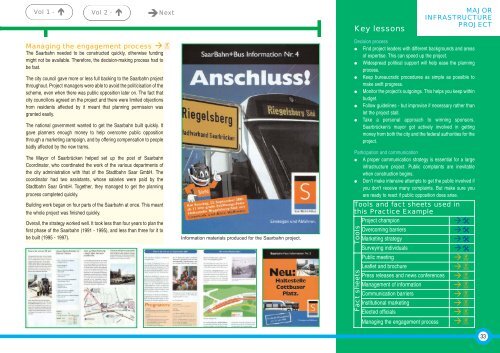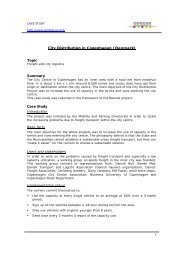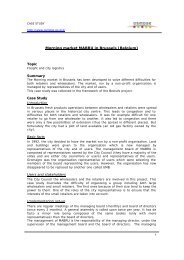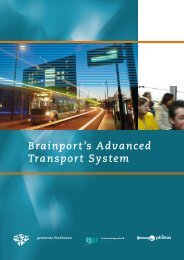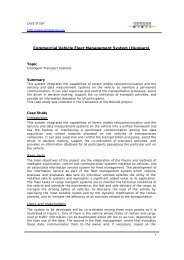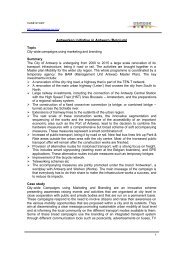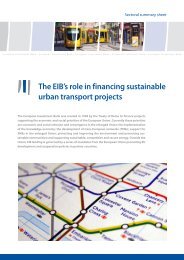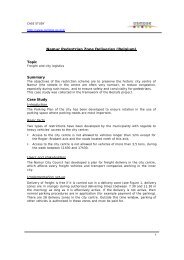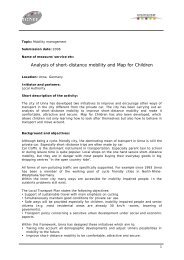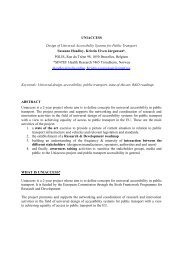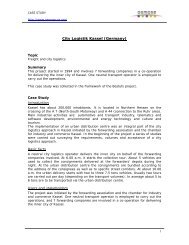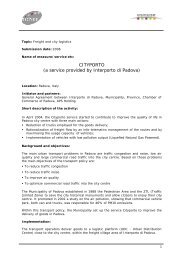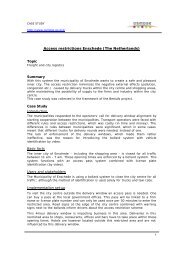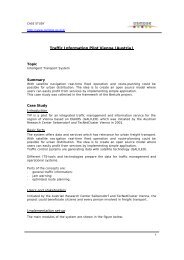Successful transport decision-making - Osmose
Successful transport decision-making - Osmose
Successful transport decision-making - Osmose
Create successful ePaper yourself
Turn your PDF publications into a flip-book with our unique Google optimized e-Paper software.
Vol 1 - <br />
Vol 2 - <br />
Next<br />
Key lessons<br />
MAJOR<br />
INFRASTRUCTURE<br />
PROJECT<br />
<br />
Managing the engagement process<br />
The Saarbahn needed to be constructed quickly, otherwise funding<br />
might not be available. Therefore, the <strong>decision</strong>-<strong>making</strong> process had to<br />
be fast.<br />
The city council gave more or less full backing to the Saarbahn project<br />
throughout. Project managers were able to avoid the politicisation of the<br />
scheme, even when there was public opposition later on. The fact that<br />
city councillors agreed on the project and there were limited objections<br />
from residents affected by it meant that planning permission was<br />
granted easily.<br />
The national government wanted to get the Saarbahn built quickly. It<br />
gave planners enough money to help overcome public opposition<br />
through a marketing campaign, and by offering compensation to people<br />
badly affected by the new trams.<br />
The Mayor of Saarbrücken helped set up the post of Saarbahn<br />
Coordinator, who coordinated the work of the various departments of<br />
the city administration with that of the Stadtbahn Saar GmbH. The<br />
coordinator had two assistants, whose salaries were paid by the<br />
Stadtbahn Saar GmbH. Together, they managed to get the planning<br />
process completed quickly.<br />
Building work began on four parts of the Saarbahn at once. This meant<br />
the whole project was finished quickly.<br />
Overall, the strategy worked well. It took less than four years to plan the<br />
first phase of the Saarbahn (1991 - 1995), and less than three for it to<br />
be built (1995 - 1997).<br />
Information materials produced for the Saarbahn project.<br />
Decision process<br />
Find project leaders with different backgrounds and areas<br />
of expertise. This can speed up the project.<br />
Widespread political support will help ease the planning<br />
process.<br />
Keep bureaucratic procedures as simple as possible to<br />
make swift progress.<br />
Monitor the project's outgoings. This helps you keep within<br />
budget.<br />
Follow guidelines - but improvise if necessary rather than<br />
let the project stall.<br />
Take a personal approach to winning sponsors.<br />
Saarbrücken's mayor got actively involved in getting<br />
money from both the city and the federal authorities for the<br />
project.<br />
Participation and communication<br />
A proper communication strategy is essential for a large<br />
infrastructure project. Public complaints are inevitable<br />
when construction begins.<br />
Don’t make intensive attempts to get the public involved if<br />
you don't receive many complaints. But make sure you<br />
are ready to react if public opposition does arise.<br />
Tools and fact sheets used in<br />
this Practice Example<br />
Project champion<br />
Tools<br />
Fact sheets<br />
Overcoming barriers<br />
Marketing strategy<br />
Surveying individuals<br />
Public meeting<br />
Leaflet and brochure<br />
Press releases and news conferences<br />
Management of information<br />
Communication barriers<br />
Institutional marketing<br />
Elected officials<br />
Managing the engagement process<br />
<br />
<br />
<br />
<br />
<br />
<br />
<br />
<br />
<br />
<br />
<br />
<br />
33


